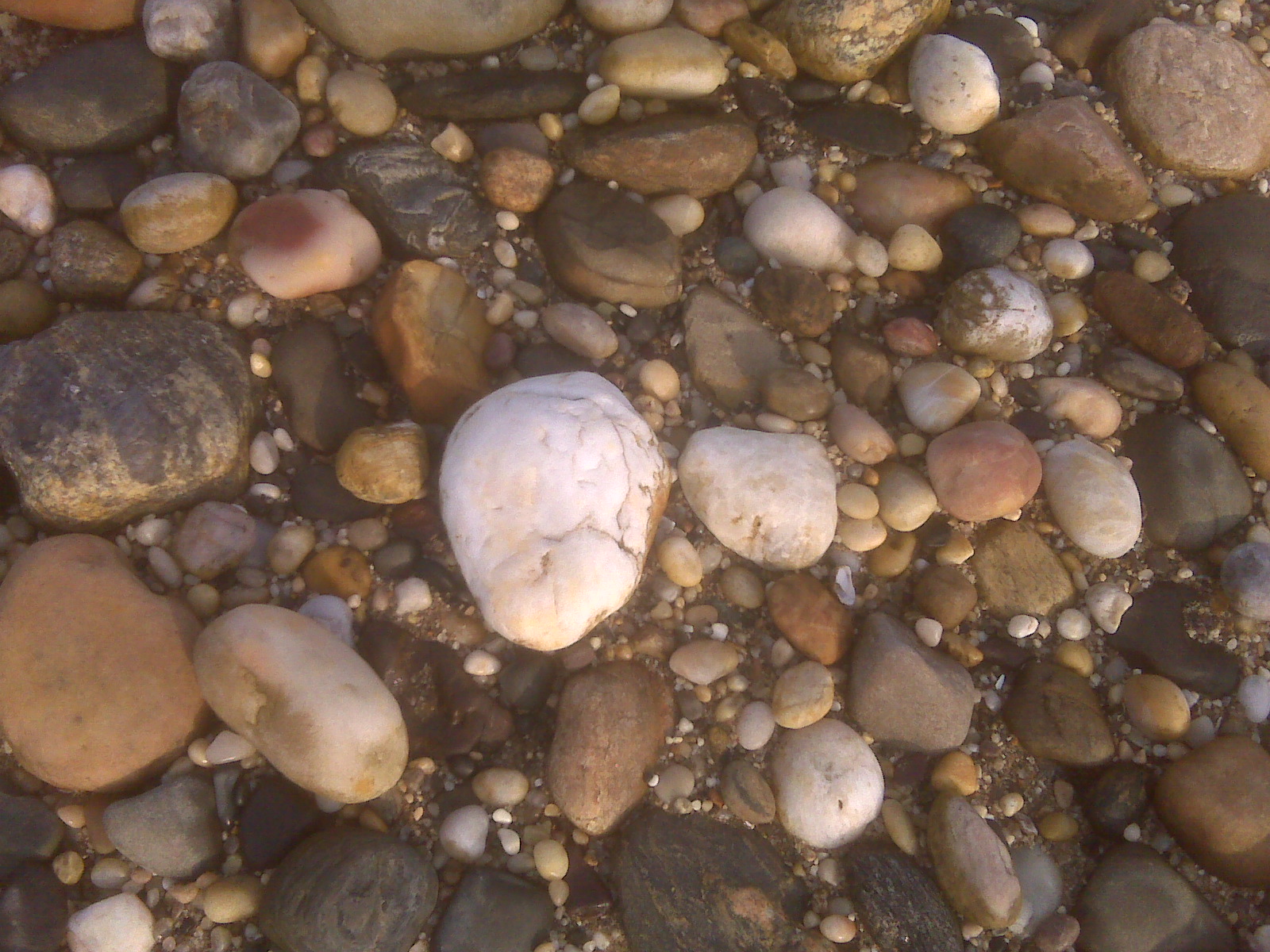Today’s post wraps up our six-day sailing adventure around Long Island Sound. Our own Curt Johnson shares with us the highlights from the trip’s final leg from Oyster Bay to Port Jefferson before sailing back home to Branford.
After paddling in from our anchorage right off the town of Oyster Bay last night, Mark and I dined at the Oyster House clams and you know – oysters – before Mark hopped the train back home.
Thursday morning, Pat Aiken, head of Friends of the Bay, led the sailboat boat for a guided Bay tour. First stop – under the draw bridge to Flowers Oyster Farm, where we met owner Dave Relyea.
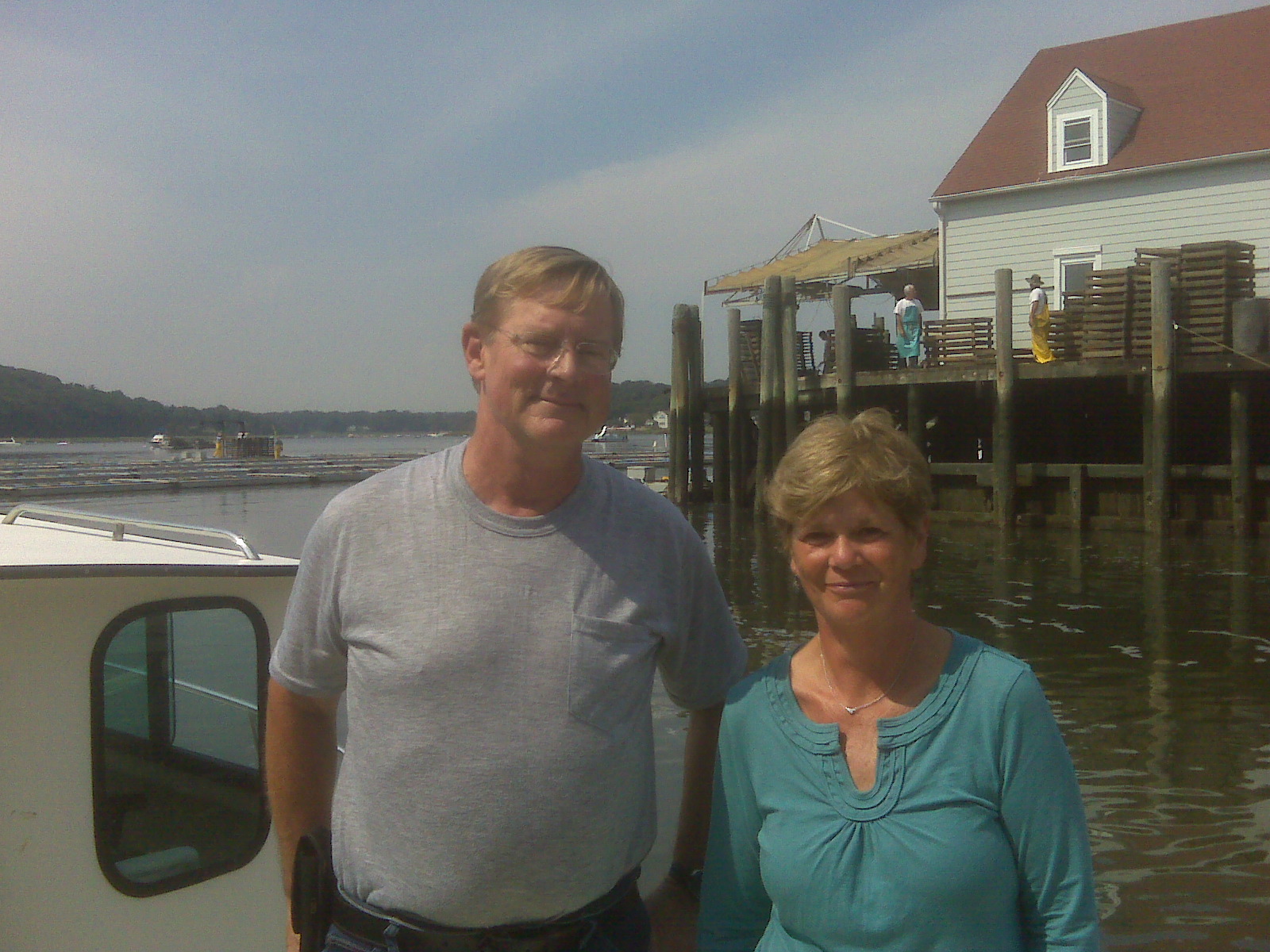
As we threw anchor, Dave just so happened to be heading out and we hopped aboard one of his smaller vessels. We motored out to one his favorite growing beds, where his crew released 20 tubs of 1.5-inch oysters that were raised at his hatchery over the past six months. Now coating the bottom, these little oysters will grow to maturity over the next two seasons.
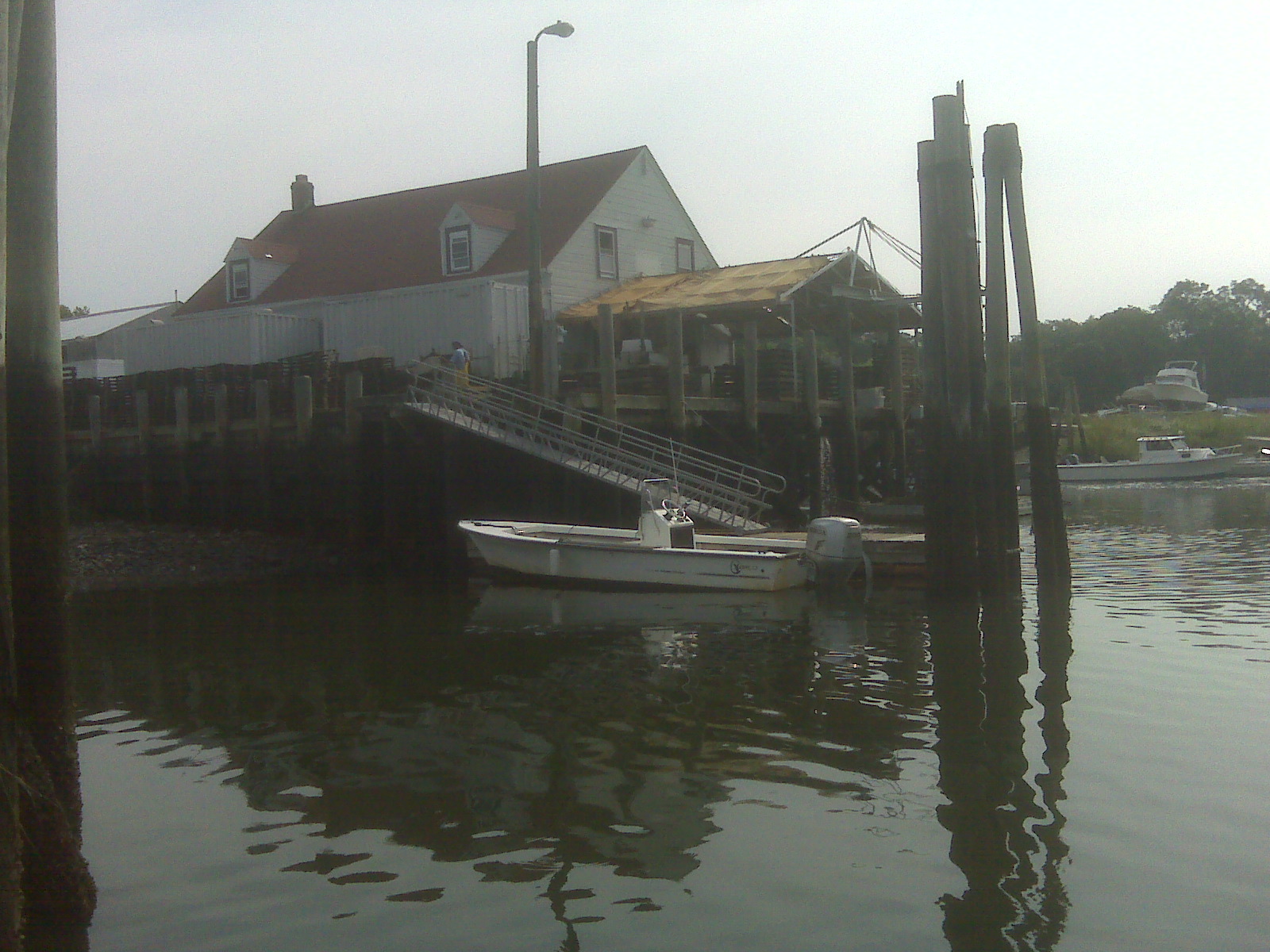
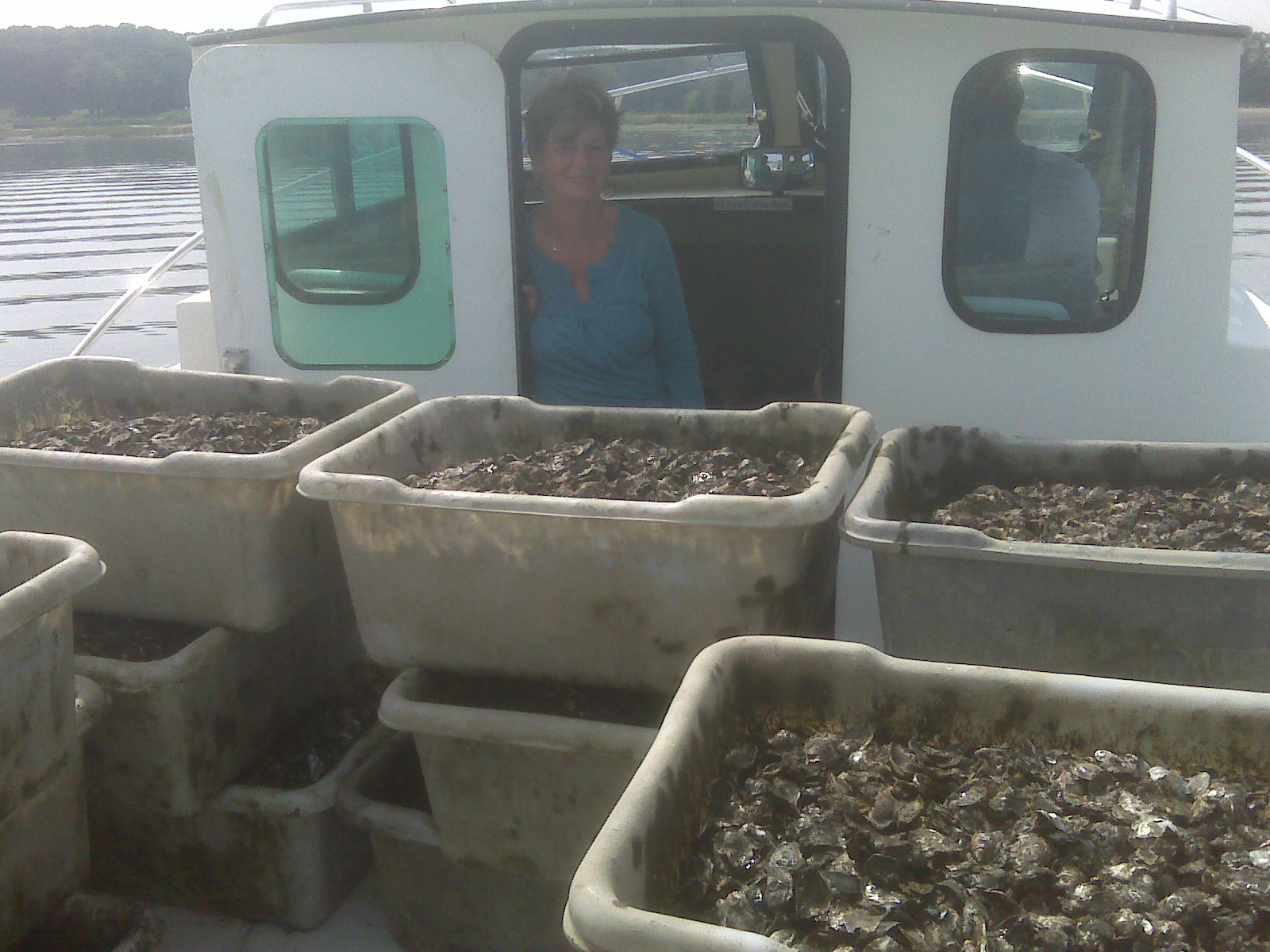
Dave believes the Bay is as good and clean for oystering as it was 30 years ago when he started. He credits Friends of the Bay and decades of advocacy for the clean water. Oyster harvesting was closed down in Oyster Bay two weeks ago when a warm water bacteria, far more prevalent down south, was traced back to Flowers’ oysters. It’s the record warm waters that Dave blames for the outbreak. When the water cools during those months with the ‘R’ in them, the bacteria will die back.
On our way back we saw Billy Joel’s home right by the Oak Cliff Yacht Club. This club is a non-profit dedicated to restoring classic sailboats, training young world-class sailors and returning Oyster Bay to its glory as a sailing destination. All praised the leadership of Dawn Reilly in moving this vision forward.
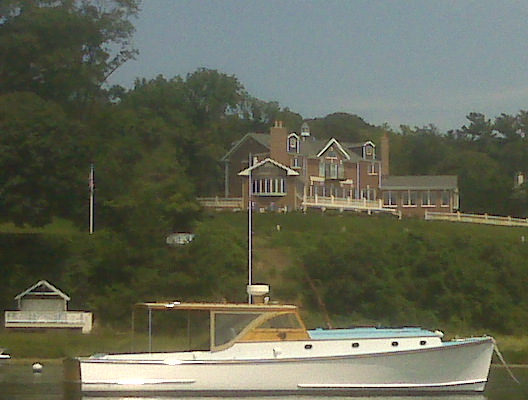
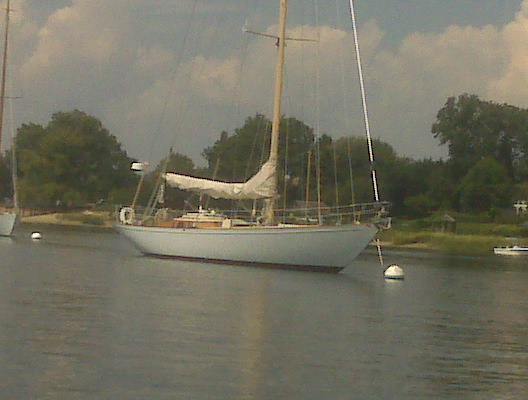
As we swung back toward our own sailboat, we bumped into Oyster Bay’s environmental guru, Jim Moriarty, who was getting the Town’s pump-out boat ready for another day of clean water work. We celebrate the new Sound-wide no boat toilet-discharge rule!
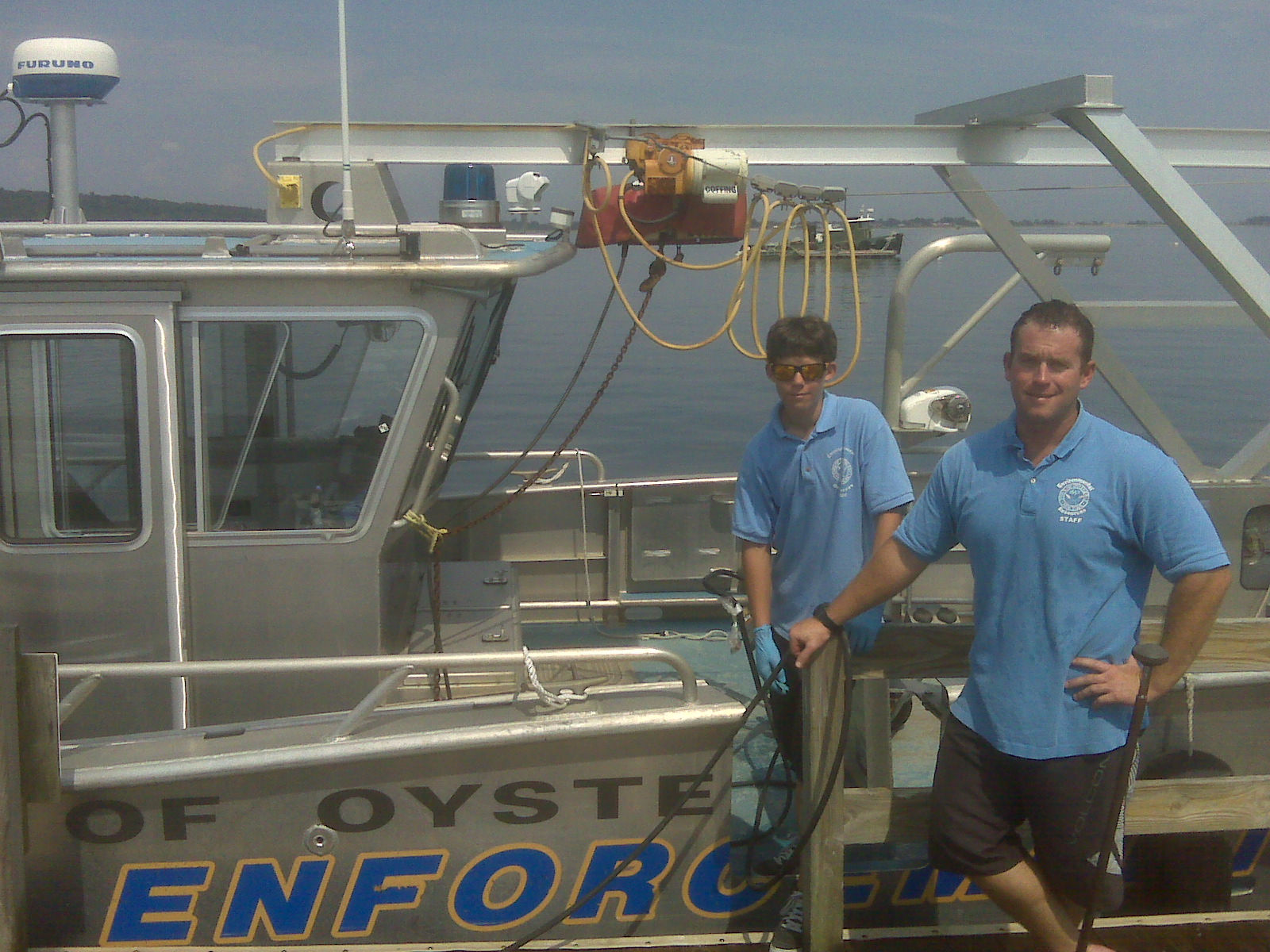
Next, I picked up my brother and sister at the train and off we went, passing yet another dozen bunker schools leaving Oyster Bay! One of the schools had bluefish chasing them, so I reached for my fishing rod, snagged a bunker and let it swim. After two minutes, I felt the familiar, steady pull of a blue. I let it run, set the hook, and, a great battle commenced. After a few minutes, an eight-pound toothy bluefish was boat side hooked right in the lip. My co-worker Kierran would have been proud of me letting her go and watching it dive to a deep refuge for recovery.
With flat seas, we headed in to wait for the wind. On our way we saw the Thomas Jefferson, a NOAA research vessel, taking a scientific survey of bottom conditions in a pilot bottom mapping effort for the Sound.
We swam in the gorgeous natural lagoon at Eaton’s Neck until the wind came up with the change of tide. Then we sailed west to Port Jefferson as the sun dipped toward the horizon.
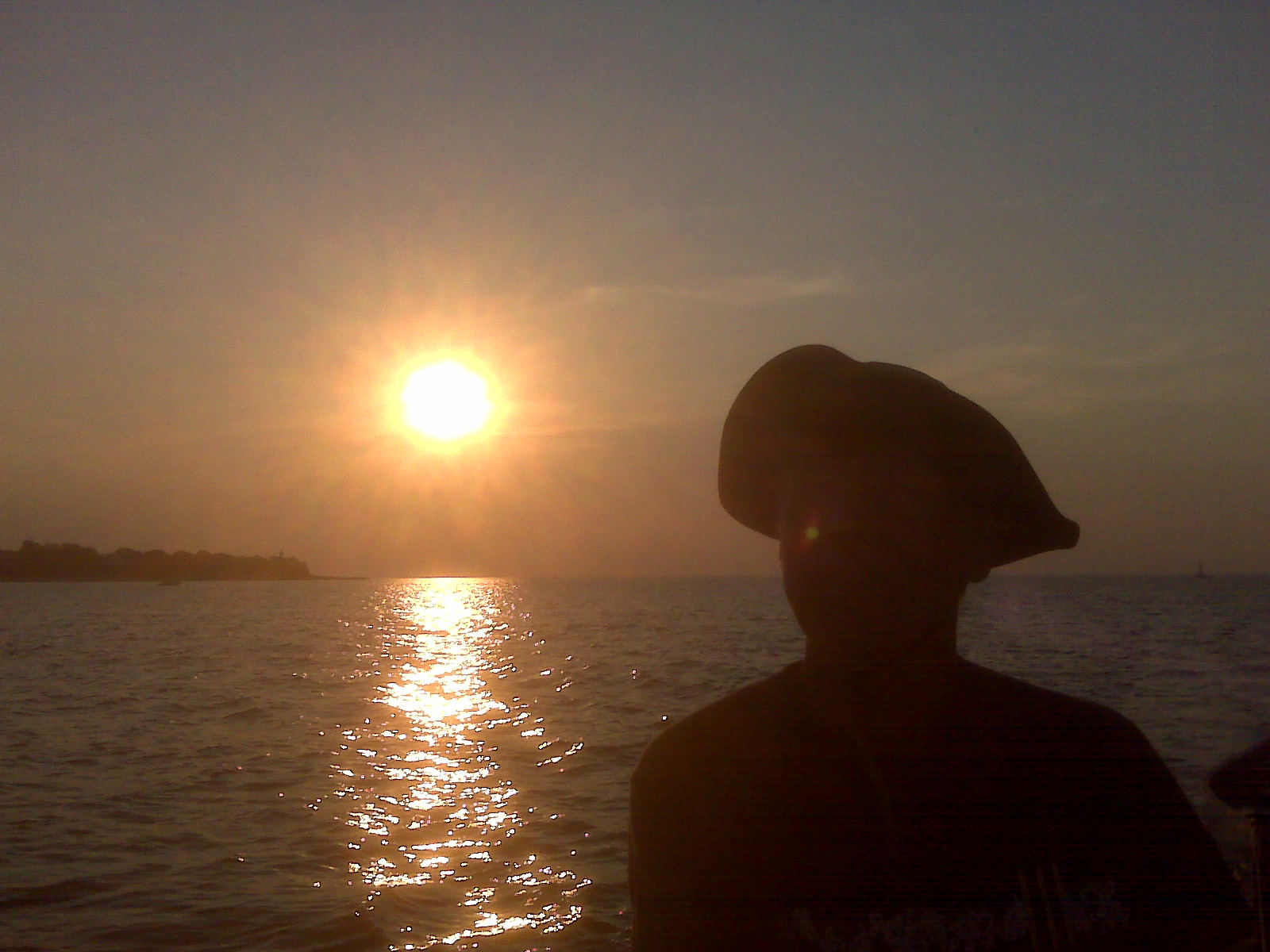
Friday was spent exploring the Port Jefferson bay and harbor. We sailed and motored up inlets to Small Bay and Conscious Bay – lovely marsh lined natural bays where the fish were jumping. I met my old buddy, Roger Uihlien, and his 11-year-old son Avi and enjoyed camp-out dining on fresh caught snapper blues.
On our final morning, my sister Sherry, Roger, Avi, and I walked around the 200-plus acre Suffolk County park system made up of beach, dunes and marsh marking the east entrance to Port Jefferson.
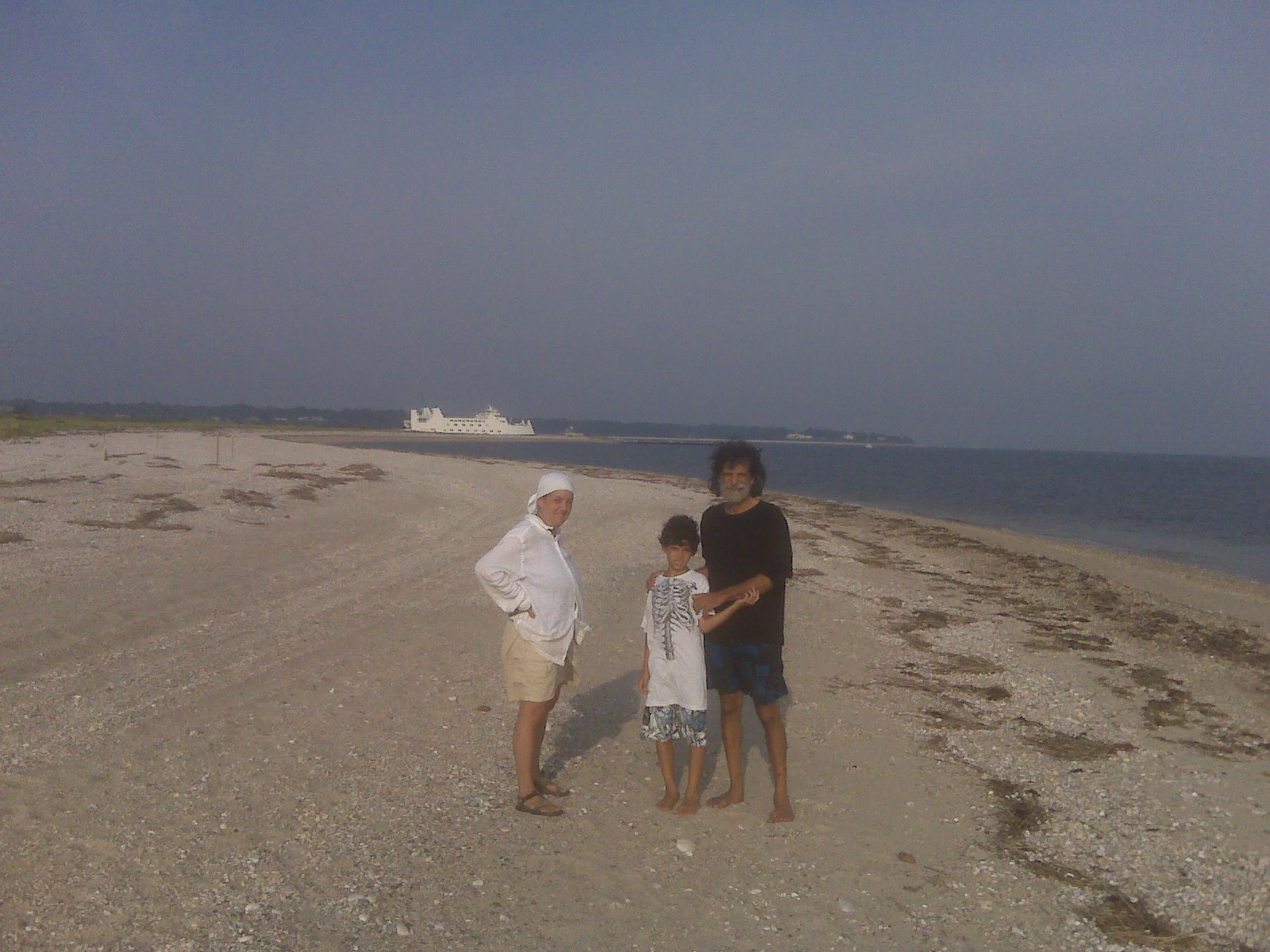
In the wash of the beach, and throughout the entire dune area, is a rainbow of rounded cobbles, which were washed and bulldozed down from all over New England into this terminal moraine we call Long Island by the glacier some 12,000 years ago.
A good portion of this important wildlife haven in the park is set aside as a tern nesting area.
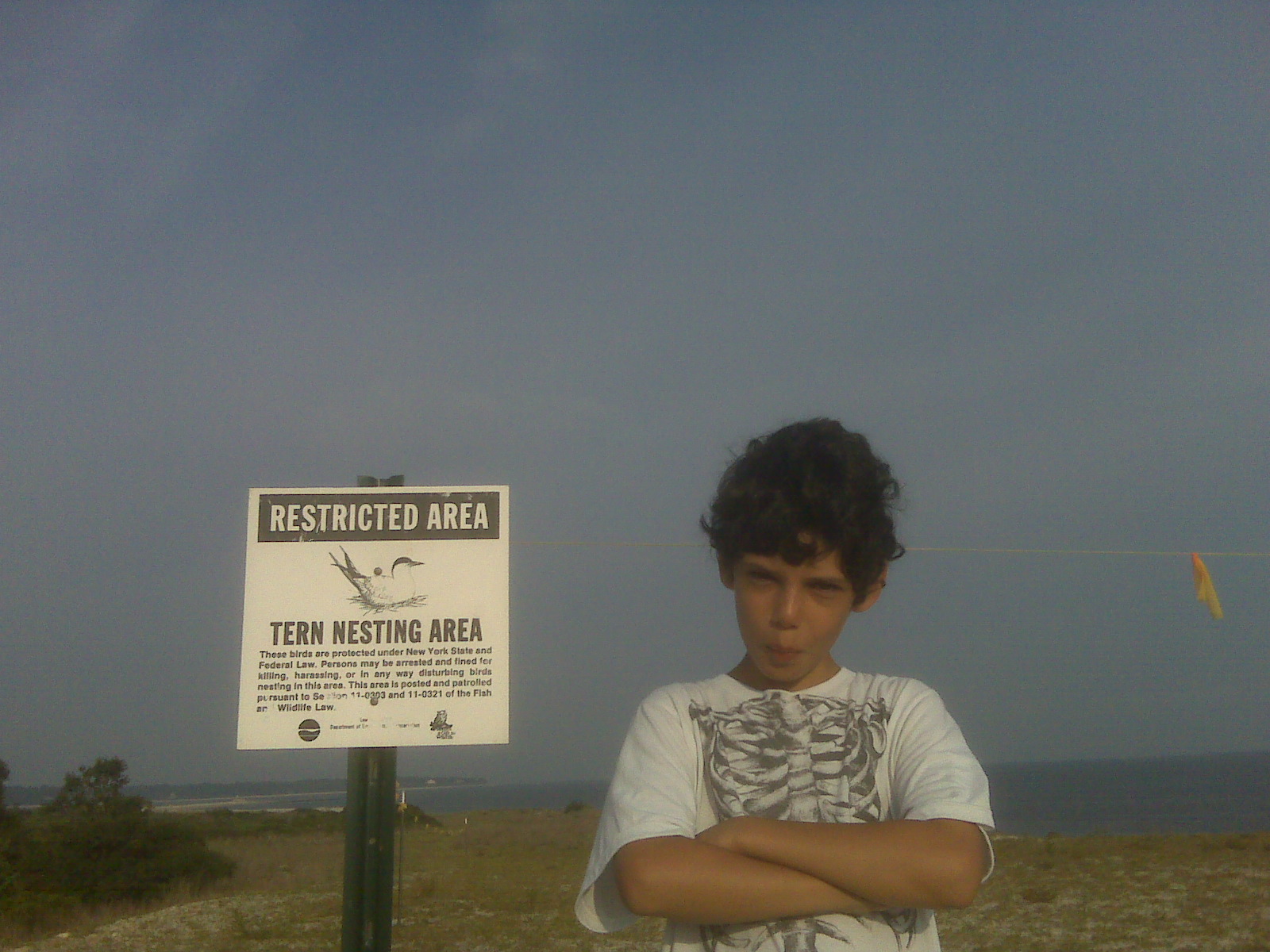
Slipping the anchor for the last time we headed out for an exciting crossing – with a hard steady blow from the east mounding up three and four foot waves. All hands had to sit up on the rail of the little mariner to keep her steady. After a seven hour pounding, we made it home to the quiet waters of the Farm River.
As I took down sail I could not help but reflect on the freedom and wonder of small boating on the Sound. The Sound’s many and varied special places are easy to explore by sea yet so hard to find and access from land. What a wonderful place to live out Huck Finn’s adventurous spirit!
Posted by Rebecca Kaplan, director of communications for CFE/Save the Sound

